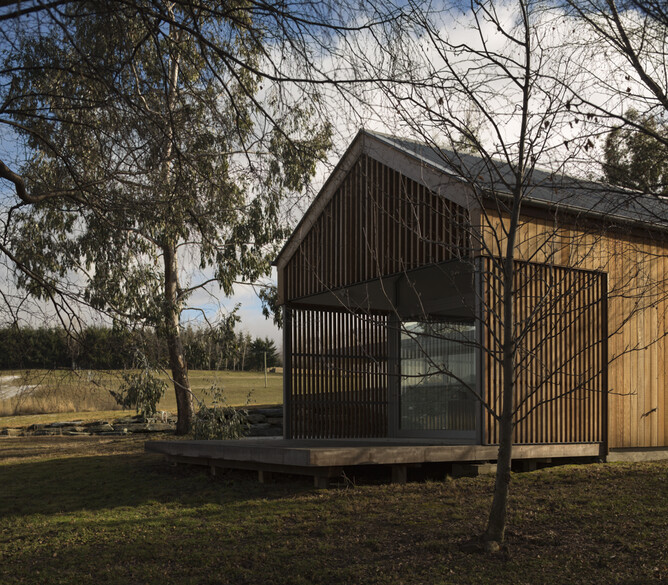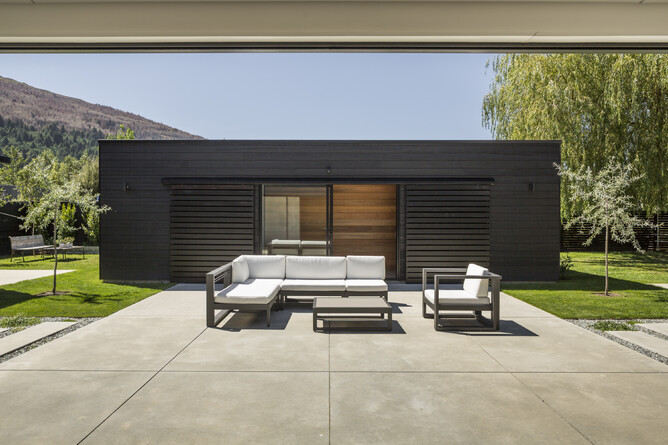At Team Green Architects we are committed to ensuring providing efficiency for all our clients. To us this means achieving better thermal comfort by using less energy. ‘Thermal comfort’ according to Wikipedia means: “the condition of mind that expresses satisfaction with the thermal environment”.
To achieve thermal comfort you first need to avoid the many common causes as shown in our other post “thermal discomfort and unhealthy buildings".
You also need to consider what we call the "Fundamentals of Architecture and Home’ – the four basic requirements every good home design should include, and yet sadly so many New Zealand homes do not have.
These fundamentals are as follows:
1. Shelter
This is a fundamental requirement of most buildings, as it is the first and most basic requirement of a homo-sapien. From the very early cave dwellers to the tribesman still living in natural formed shelters, most building forms provide some form of shelter from the elements.
2. Natural Light
Studies show a direct correlation between access to natural light and mental and physical well-being. There can also be significant (though inconsistent) heat gains from appropriate solar orientation. These gains are inconsistent as they are dependent on the weather and seasonal variation of the position of the sun in the sky. Over emphasis on solar heat gains often means overheating at different times of year or over-cooling when the sun is not out and large windows become the weakest link in the buildings thermal envelope.
Orientation & planning is key to providing good natural lighting levels, and to increasing the solar gains through appropriate location of windows & shading devices.
3. Warmth
This is a significant variable in most buildings, as it is completely dependent on two things:
- Heat Loss through the buildings thermal envelope.
- Heat sources within a building.
Temperature is significant to thermal comfort as it affects both warmth and relative humidity (see "fresh air" below. The Asthma Foundation recommends a minimum of 17 °C. internal temperature. The World Health Organisation (WHO) recommends consistent temperatures between 18 and 24°C. Most New Zealand homes, even the newer homes, are not achieving even these minimum standards!
A Passive House Criterion is to have operative winter temperatures of at least 20°C (no matter what the external temperature is!)
The quickest way to design a warm & energy efficient house is to reduce the surface area to volume ratio (see this article for more information: http://ezed.co.nz/project/form/). This means avoiding unnecessary complicated forms, and also generally saving money! Remember that when you are cold – you don’t spread yourself out, you keep your arms and legs tucked in to reduce your surface area and keep you warm. Once you have avoided unnecessary complicated building forms, you should consider the following:
How to control warmth:
Heat Loss is controlled by increasing levels of insulation and minimising gaps in the thermal envelope where hot air can escape and cold air can enter. (See Team Green Architects "Living Essentials Guide" where you can learn how to Reduce your heating bill by 90% AND BE 100% more comfortable than your neighbour!).
Heat Sources & their size can then be accurately calculated to suit the levels required for the internal volumes.
4. Fresh Air
Ventilation is vital to not only supply appropriate levels of fresh air to the buildings occupants; it also removes stale air and dilutes contaminants. By ensuring a continuous supply of adequate fresh air, to an “air-tight” building envelope, it is possible to maintain consistent temperatures and relative humidity levels.
This is not possible under the NZ Building Code. Clause G4 1.2.1 states that houses do not require a mechanical ventilation system if the “net openable area of windows or other openings [is] of no less than 5% of the floor area”. The code also requires 0.35h-1 (air changes per hour). To adequately achieve this you would need to go around your building and open all the windows and doors nine times per day at regular 2 hour and 40 minute intervals. Is anyone actually doing this?
New Zealand has the second highest Asthma rate per capita in the world. This is inconsistent with the fact that New Zealand has some of the cleanest air in the world (due mainly to geography, topography and population levels). We don’t know why levels of Asthma are so high in NZ, but a possible cause that has been cited is poor indoor air quality, plus the formation of damp & mould within many buildings. This link to the New Zealand based study on Airtightness and Moisture Management http://www.proclima.co.nz/pro-clima-study will explain the issue more thoroughly.
WHO recommends relative humidity levels between 40 and 60%. Most New Zealand homes built to Code Minimum standards will not be consistently achieving this standard.
The most efficient and healthy way to supply fresh air to a building is via a Balanced Heat Exchange Ventilation system. These systems can only be utilised to their full effect once the building has been well insulated and made “air-tight”. They can then supply continuous fresh air whilst maintaining up to 95% of heat from the expelled air.
The definition of a Passive House is: "A building for which thermal comfort (ISO 7730) can be achieved solely by post heating or post cooling of the fresh air mass which is required to achieve sufficient indoor air quality conditions - without the need for additional re-circulation of air".
Team Green Architects have proven that this is both easily achievable and low cost way to ensuring thermal comfort and energy efficiency.
Keen to make the change in your next home?




